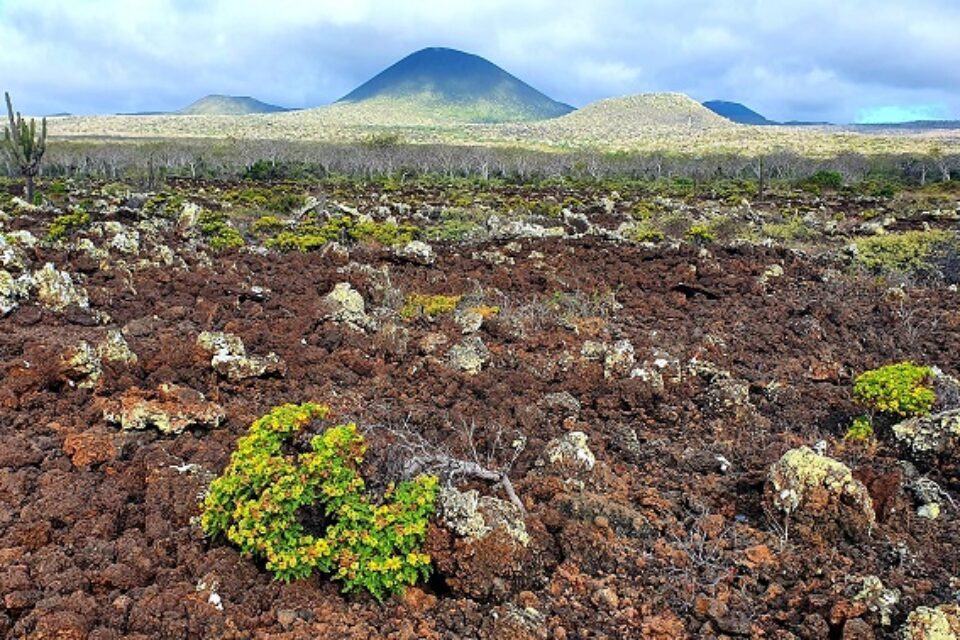

Gills Club: Empowering young women in Galapagos
Gills Club (Chicas con Agallas) aims to engage more girls in shark science in Galapagos, and is supported by GCT as part of our education and outreach work.
Founded by shark scientists Dr Diana Pazmiño, Lauren Goodman, Yasuní Chiriboga and Ángela Palomino, the Club has now grown from its beginnings on San Cristobal island to include a branch on Santa Cruz, led by Sofía Green. We recently spoke to Diana and Sofía to find out more about the evolution of this inspiring project…
What first motivated you to set up the Gills Club in Galapagos?
DP: My love for the ocean started when I was a little kid. I remember my dad taking my brother and me to snorkel every weekend and watching all the wonderful creatures in the sea. That was one of my favourite things to do and it defined who I am! As I grew older, I realised not everyone has the opportunity to observe the amazing nature we are surrounded by. When I came back to Galapagos after finishing my PhD, and with the support of three students (Lauren, Yasuní and Ángela), we decided to start the Club in 2019. We were inspired by the work that Gills Club was doing in the US, but also wanted to create our own identity. We decided then to adopt the name ‘Chicas con Agallas’ which also means ‘courageous girls’ in Spanish (a perfect fit!).
Could you explain a bit about how the Club works, and what the sessions involve?
DP: Each cohort of the Club lasts one year and participates in a combination of laboratory and field activities once every month. The activities aim to engage girls in scientific and conservation initiatives through hands-on participation, games and discussion sessions. The girls are also introduced to role models and have the chance to meet and learn from all kinds of scientists, which contributes to our goal of encouraging STEM careers.

I remember my dad taking my brother and me to snorkel every weekend and watching all the wonderful creatures in the sea. That was one of my favourite things to do and it defined who I am!
Sofía, how did you become involved with the Gills Club?
SG: Diana and I work daily researching elasmobranchs (sharks and rays, particularly) which is how we came to know each other. I remember Diana sharing with me how she and her students had started the Gills Club on San Cristobal and the effect it was having on young girls from the community. By getting them involved in STEM from a very young age through experiential education the girls were gaining access to the ocean, their knowledge and care for their environment was growing and simultaneously the club’s activities were providing a safe space and empowering them to believe in themselves. I immediately felt connected to the project.
A year after I learned about it, I was asked if I would be interested in replicating the efforts on my home island of Santa Cruz, and I didn’t need to think twice about it. The local community responded positively and after a single day of putting out the call to sign up the spots for the Club had filled up. We have since carried out a full cohort and it’s been incredibly rewarding to provide this opportunity to young girls on my island.
How have things changed for young female scientists in Galapagos since you were at school? What were the opportunities like when you were younger?
SG: When I was little, education in the Galapagos Islands was very limited; this is the reason why, even though my parents still worked and spent most of their time on the Islands, they decided to raise us in mainland Ecuador. For this reason, expanding the club to Santa Cruz and seeing what it has meant for young girls’ education has been extra special for me.

What are your future plans and aspirations for the Gills Club? What are the biggest challenges that you face in keeping it running?
DP: Although these opportunities for kids, especially for girls, have increased in the past 30 years, we hope that they continue to grow. In fact, one of our dreams is to reach Isabela and Floreana in the future. We know it won’t be easy. Challenges to grow include financial support and on-site personnel committed to the project, but we are hopeful that our partners will continue to understand the value of these efforts.
SG: The education system in Galapagos has improved greatly but it is still not equivalent to the education on the mainland, and thus I aspire for opportunities like the Gills Club to continue emerging, not only on Santa Cruz and San Cristobal but also on the other populated islands. My hope is that through activities like these our island communities will flourish and grow sustainably with the unique environment of this magical archipelago.
When I was little, education in the Galapagos Islands was very limited... For this reason, expanding the club to Santa Cruz and seeing what it has meant for young girls’ education has been extra special for me.
Later this spring, our partners at Craghoppers will be releasing a series of short films documenting GCT’s work in Galapagos, including the amazing Chicas con Agallas. Make sure you follow GCT and Craghoppers on social media for more news coming soon!
Related articles


One woman’s mission to connect families with gardening and endemic plant conservation

Environmental education on Floreana: Supporting island restoration


